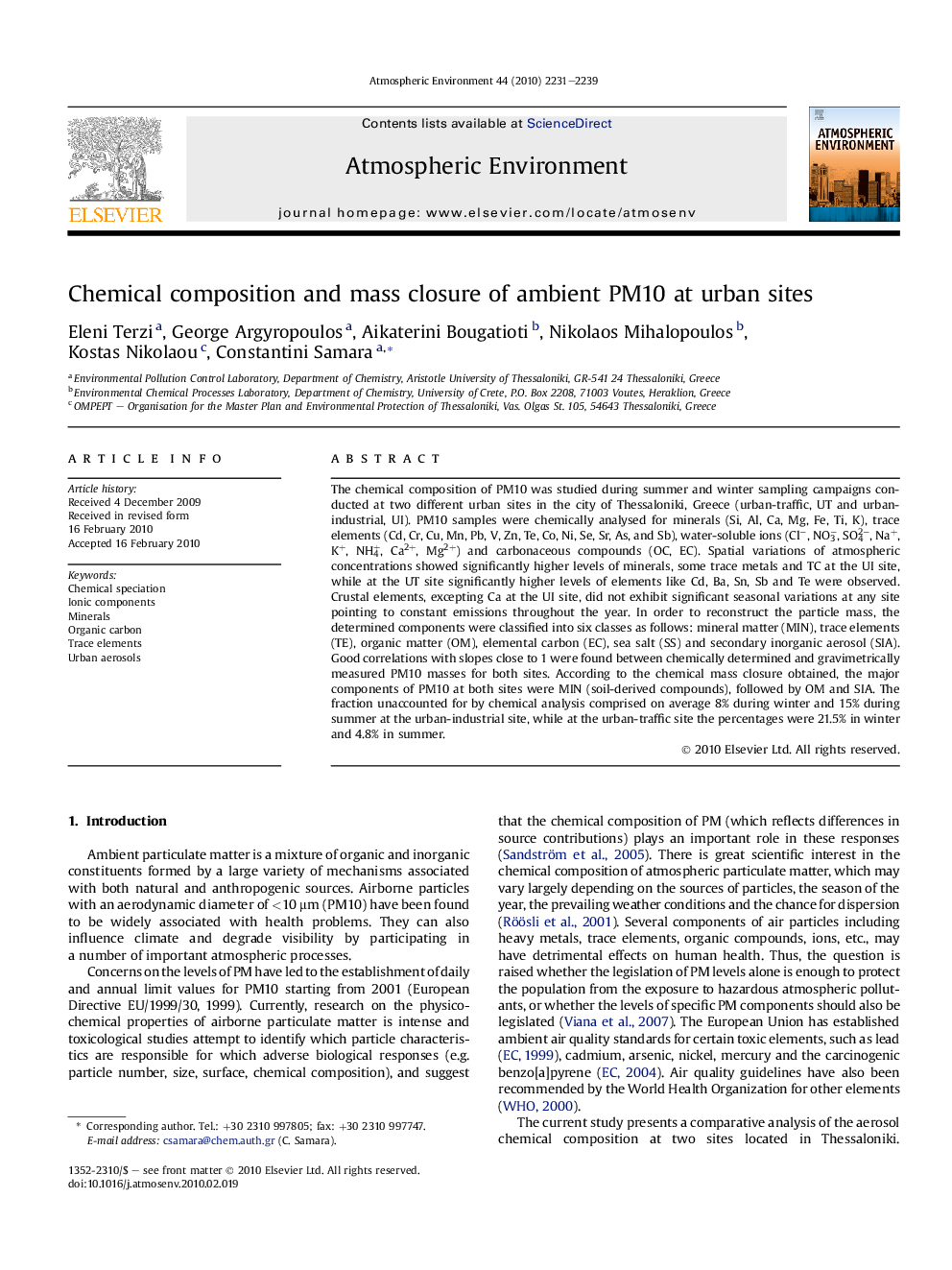| Article ID | Journal | Published Year | Pages | File Type |
|---|---|---|---|---|
| 4440922 | Atmospheric Environment | 2010 | 9 Pages |
The chemical composition of PM10 was studied during summer and winter sampling campaigns conducted at two different urban sites in the city of Thessaloniki, Greece (urban-traffic, UT and urban-industrial, UI). PM10 samples were chemically analysed for minerals (Si, Al, Ca, Mg, Fe, Ti, K), trace elements (Cd, Cr, Cu, Mn, Pb, V, Zn, Te, Co, Ni, Se, Sr, As, and Sb), water-soluble ions (Cl−, NO3−, SO42−, Na+, K+, NH4+, Ca2+, Mg2+) and carbonaceous compounds (OC, EC). Spatial variations of atmospheric concentrations showed significantly higher levels of minerals, some trace metals and TC at the UI site, while at the UT site significantly higher levels of elements like Cd, Ba, Sn, Sb and Te were observed. Crustal elements, excepting Ca at the UI site, did not exhibit significant seasonal variations at any site pointing to constant emissions throughout the year. In order to reconstruct the particle mass, the determined components were classified into six classes as follows: mineral matter (MIN), trace elements (TE), organic matter (OM), elemental carbon (EC), sea salt (SS) and secondary inorganic aerosol (SIA). Good correlations with slopes close to 1 were found between chemically determined and gravimetrically measured PM10 masses for both sites. According to the chemical mass closure obtained, the major components of PM10 at both sites were MIN (soil-derived compounds), followed by OM and SIA. The fraction unaccounted for by chemical analysis comprised on average 8% during winter and 15% during summer at the urban-industrial site, while at the urban-traffic site the percentages were 21.5% in winter and 4.8% in summer.
